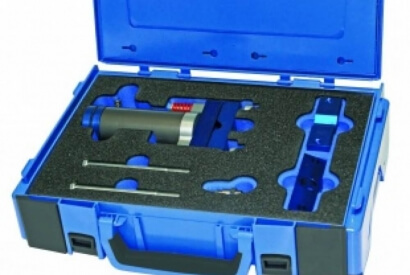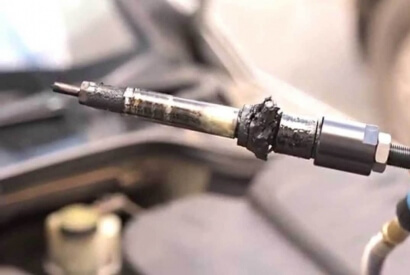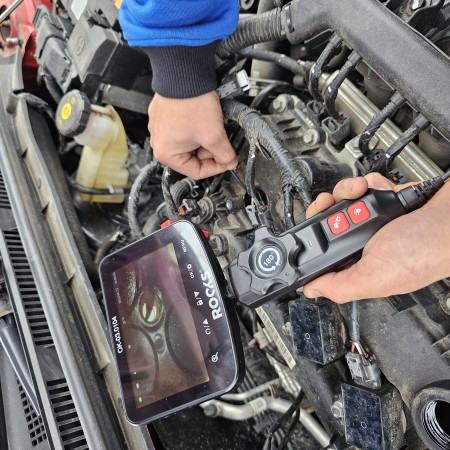 Basket 0 (empty)
Basket 0 (empty) No products
Prices are tax included


Blog categories
Search on blog
Who cleans is driving - article ROOKS
Published: 14. 06. 2019 | Categories: Mode
The paraphrase of the old, well-known mechanics slogan: "whoever lubricates, drives" concerns a very important issue related to the proper functioning of diesel engines - the efficient operation of glow plugs. "Who cleans is driving" - this is the motto for every workshop that undertakes glow plug replacement!
"Who cleans, the one goes" - why?
In the aluminum head, in a very small space above the piston, there are two foreign bodies, ie a steel injector and a steel-ceramic glow plug. Adding to this high temperature, ranging from 850˚C to 1200˚C and the fuel-air mixture, which is pressed into the micro-spaces between the aluminum head and the steel due to compression pressure, the result is a catastrophic image of soot, carbon and sintered carbon deposits multiplying with each engine operating cycle. These carbon deposits stick on the candle and its filament - until it is replaced with a new one. What's more, sometimes there are so many carbon deposits that pulling the candle out becomes problematic. Therefore, one should remember about the motto: "who cleans, goes this"!
Standard glow plug replacement procedure
The standard glow plug replacement procedure uses a standard tool kit, which includes: a glow plug socket set, a microudar wrench with a Vibro Impact mechanism that moves soot and carbon deposits, a torque wrench, a knob and… and something else.
According to the principle: "who cleans, goes!" the standard glow plug replacement tool kit should be completed with glow plug socket cleaning and milling tools. Simple and mandatory each time a glow plug is removed, the tools are: a filament roughing cutter and brass brushes for thorough cleaning of both the filament channel and the entire glow plug socket.
Simple, obligatory, but not popular enough - these are the candle socket cleaning tools!
What do the tools for cleaning a glow plug socket look like?
First, a cutter - for cleaning the filament channel itself from coarse deposits - which must have the appropriate diameter (slightly smaller than the filament channel) and a centering module or a centering sleeve mounted in the glow plug thread. There are cutters on the market with single sleeves (i.e. only for one type of candles) or with double sleeves. Complete sets for M8x1, M9x1, M10x1 and M10x1.25 candles are also available.
The cutter is designed to catch thick carbon deposit, so it is covered with hard grease, because the removed carbon deposit sticks to it. The milling cutter should be made up to 10 rotations combined with reciprocating movement towards the cylinder.
Secondly, the brushes - for thorough cleaning of the plug socket and the filament channel - which must be made of a suitably soft material so as not to scratch the head. The head is relatively soft and deep scratches collect more soot. Brass, copper or very fine stainless steel wire (0.06mm) is best for this purpose. Brass is as soft as copper and as strong as steel, so the best brushes and wipers are often made of this material - just like firearms cleaners.
The brushes have several diameters: 5 mm - for the filament channel, 7.5 mm for the plug socket with M8 and M9 threads, and 9.5 mm for the M10 spark plug socket. There are also progressive brushes with several diameters: 4.6 mm and 9 mm. These brushes will clean the entire socket - from the filament channel to the spark plug threads - that's a plus. The downside is that they wear out very quickly.
Glow plug seats must be cleaned before driving. A clean socket ensures correct electrical contact, so the spark plug resistance and the operation of the filament are correct. A clean seat means better discharge of the candle temperature and slower deposition of new carbon deposits. A clean filament channel enables its proper thermal operation (expansion during heating) and trouble-free insertion of a new glow plug. If the filament channel is not cleaned, the filament may crack when installing a new spark plug.
So: "Who cleans is driving"!
Source: rooks.pl


 Govoni manufacturer of specialist tools
Govoni manufacturer of specialist tools  How to remove a seized injector - VIBRO SYSTEM
How to remove a seized injector - VIBRO SYSTEM 







 0
0 
